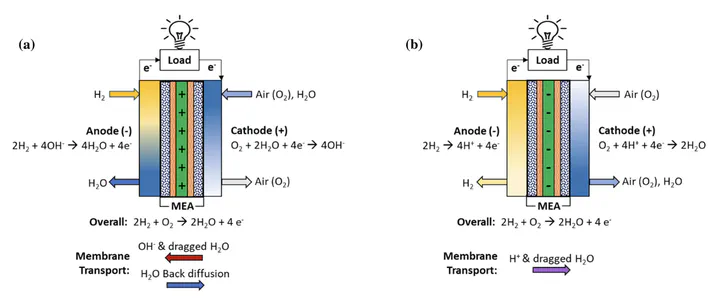A review of the synthesis and characterization of anion exchange membranes
May 21, 2018·
,
 ·
0 min read
·
0 min read
K. F. L. Hagesteijn
S. Jiang
Prof. Dr. Bradley P. Ladewig

Abstract
This review highlights advancements made in anion exchange membrane (AEM) head groups, polymer structures and membrane synthesis methods. Limitations of current analytical techniques for characterizing AEMs are also discussed. AEM research is primarily driven by the need to develop suitable AEMs for the high-pH and high-temperature environments in anion exchange membrane fuel cells and anion exchange membrane water electrolysis applications. AEM head groups can be broadly classified as nitrogen based (e.g. quaternary ammonium), nitrogen free (e.g. phosphonium) and metal cations (e.g. ruthenium). Metal cation head groups show great promise for AEM due to their high stability and high valency. Through “rational polymer architecture”, it is possible to synthesize AEMs with ion channels and improved chemical stability. Heterogeneous membranes using porous supports or inorganic nanoparticles show great promise due to the ability to tune membrane characteristics based on the ratio of polymer to porous support or nanoparticles. Future research should investigate consolidating advancements in AEM head groups with an optimized polymer structure in heterogeneous membranes to bring together the valuable characteristics gained from using head groups with improved chemical stability, with the benefits of a polymer structure with ion channels and improved membrane properties from using a porous support or nanoparticles.
Type
Publication
Journal of Materials Science